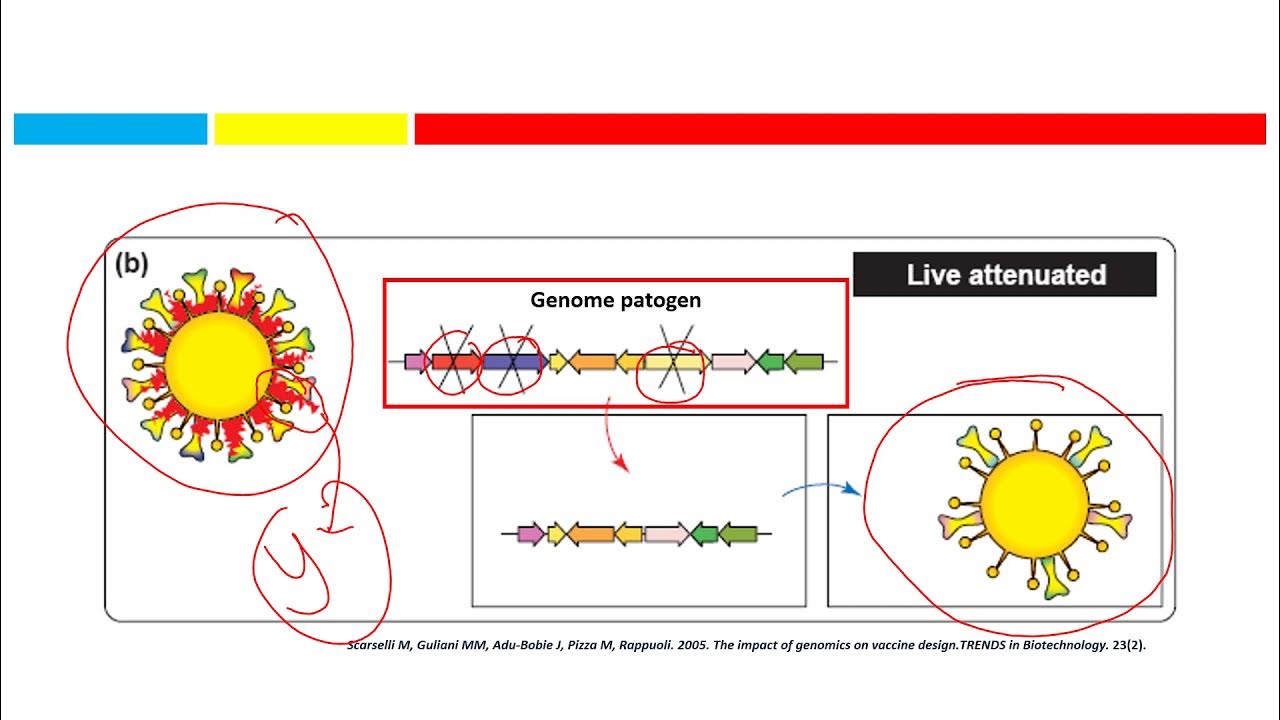mRNA vaccines, explained
Summary
TLDRThis script narrates the rapid development of COVID-19 vaccines, highlighting the traditional methods and the innovative mRNA and DNA-based technologies that have revolutionized vaccine production. It emphasizes the unprecedented speed of vaccine development, driven by global collaboration and breakthroughs in mRNA vaccines, which use the virus's genetic sequence to instruct cells to produce harmless spike proteins, triggering an immune response. The script also touches on the challenges of mRNA stability and the potential of these new technologies for future treatments.
Takeaways
- 🌟 Dr. Maurice Hilleman's daughter's mumps infection led to the fastest vaccine development at the time, which took four years.
- 🏥 The Covid-19 vaccines broke records by going from development to approval in a matter of months, driven by global efforts and breakthroughs in technology.
- 🛡️ Traditional vaccines expose the immune system to weakened, dead, or part of a virus/bacteria to teach it how to respond to threats.
- 🧬 Modern mRNA vaccines, like those from Pfizer-BioNTech and Moderna, use the virus's genetic sequence to instruct cells to produce a harmless spike protein, eliciting an immune response.
- 🧬 DNA vaccines, such as those from AstraZeneca and Johnson & Johnson, use a harmless virus to deliver DNA instructions into cells, which is more stable than mRNA but requires a carrier.
- 🔬 Vaccine development typically takes 5 to 10 years, involving growing and transporting live pathogens in labs, a time-consuming process.
- 🔄 The speed of Covid-19 vaccine development was enhanced by overlapping human trial phases and starting manufacturing early.
- 🌐 mRNA vaccines require ultra-cold storage and a protective fatty barrier for stability, posing logistical challenges for global distribution.
- 🛠️ The use of mRNA and DNA in vaccines represents a significant advancement in vaccine technology with potential applications beyond Covid-19, such as for cancer or HIV.
- 🔑 The pandemic has underscored the importance of vaccine development and may act as a catalyst for future innovations in vaccine technologies and disease treatments.
- 🚀 The rapid development of Covid-19 vaccines could be a turning point, setting a new standard for vaccine creation and response to global health crises.
Q & A
Who is Dr. Maurice Hilleman and what significant contribution did he make to vaccine development?
-Dr. Maurice Hilleman was a scientist who, after his daughter contracted mumps, developed the mumps vaccine in record time, which was the fastest vaccine development at that time, taking only four years from concept to approval.
What is the significance of the Covid-19 vaccines in terms of development speed?
-The Covid-19 vaccines have shattered previous records for vaccine development, going from development to approval in a matter of months, driven by billions of dollars and a global effort, as well as breakthroughs in vaccine technology.
How do traditional vaccines work to teach the immune system to respond to a threat?
-Traditional vaccines work by exposing the immune system to a weakened or dead version of a virus or bacteria, or an inert version of a toxin, or a small part of a virus. This exposure allows the immune system to learn how to fight off the actual threat if exposed later.
What is the 'spike protein' and why is it important in the context of the Covid-19 vaccines?
-The 'spike protein' is a part of the SARS-CoV-2 virus that allows it to enter human cells. Some Covid-19 vaccines focus on this protein, using it to stimulate an immune response without causing the disease, as the body recognizes it as a foreign threat.
What are the challenges associated with traditional vaccine development involving live pathogens?
-Traditional vaccine development involving live pathogens requires growing and transporting large amounts of these pathogens in a lab, which is time-consuming and can take an average of 5 to 10 years to reach FDA approval.
How do mRNA vaccines, like those developed for Covid-19 by Pfizer-BioNTech and Moderna, differ from traditional vaccines?
-mRNA vaccines contain synthesized mRNA with instructions that tell cells to produce a harmless version of the spike protein. The immune system then recognizes this protein as a threat and mounts an immune response. This approach eliminates the need for growing and purifying proteins in a lab, saving significant time and resources.
What is the main drawback of mRNA vaccines in terms of stability and storage?
-The main drawback of mRNA vaccines is that mRNA is easily broken down. It requires a protective fatty barrier for delivery and must be kept at ultra-cold temperatures, which can be challenging for global distribution.
How do the Covid-19 vaccines from AstraZeneca and Johnson & Johnson differ from mRNA vaccines?
-The Covid-19 vaccines from AstraZeneca and Johnson & Johnson are DNA vaccines, which use a harmless virus as a carrier to deliver DNA instructions into cells. Unlike mRNA vaccines, these do not require ultra-cold storage but may face challenges with the body building resistance to the carrier virus over time.
What are the potential implications of the new vaccine technologies for future disease treatments?
-The new vaccine technologies, particularly mRNA and DNA vaccines, open up possibilities for targeted treatments for diseases like cancer or HIV, as they allow for the delivery of specific instructions to the body's cells, potentially revolutionizing vaccine development and disease treatment.
How might the Covid-19 pandemic be a turning point for vaccine development and technology?
-The Covid-19 pandemic has accelerated the development and adoption of new vaccine technologies, such as mRNA and DNA vaccines. The rapid development and deployment of these vaccines during the pandemic could set a precedent for faster and more efficient vaccine creation in the future.
Outlines

此内容仅限付费用户访问。 请升级后访问。
立即升级Mindmap

此内容仅限付费用户访问。 请升级后访问。
立即升级Keywords

此内容仅限付费用户访问。 请升级后访问。
立即升级Highlights

此内容仅限付费用户访问。 请升级后访问。
立即升级Transcripts

此内容仅限付费用户访问。 请升级后访问。
立即升级浏览更多相关视频

The Coronavirus Vaccine Explained | COVID-19

TEORI BIOTEKNOLOGI FARMASI : NANOBIOTEKNOLOGI (PENGHANTARAN OBAT, VAKSIN) KELOMPOK 7, TEORI 3

Lecure 11 Teknologi Produksi Vaksin

【ベストセラー】きょうから始めるコロナワクチン解毒17の方法【本要約】

How the COVID-19 vaccines were created so quickly - Kaitlyn Sadtler and Elizabeth Wayne

Three Minute Thesis Winner 2024
5.0 / 5 (0 votes)
